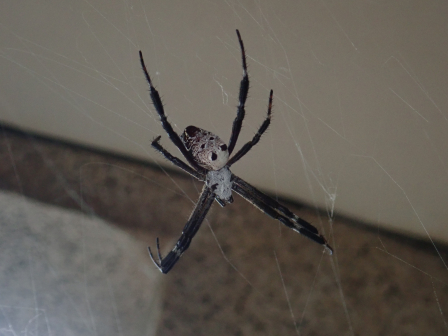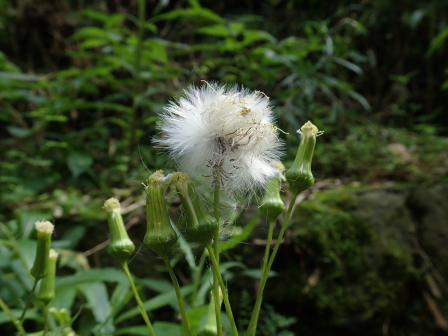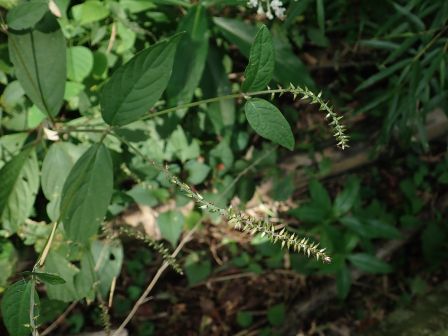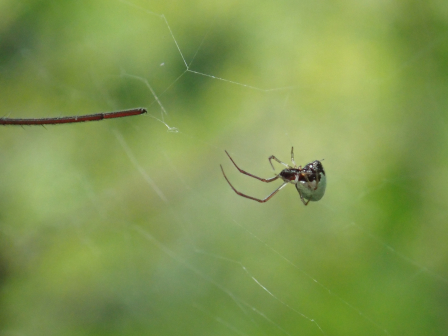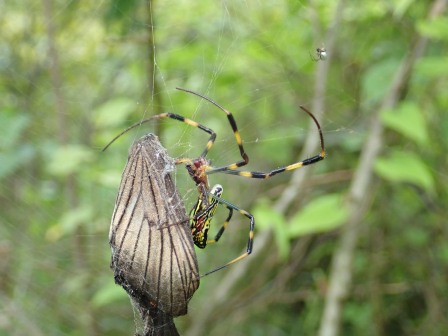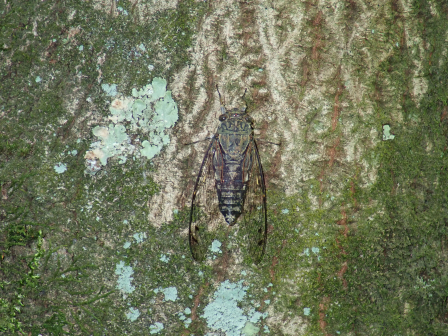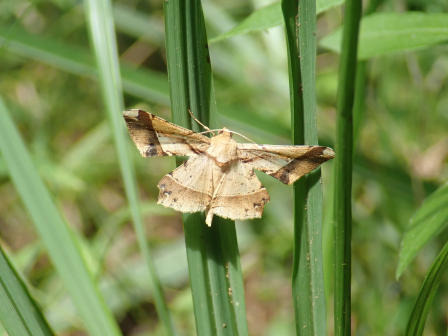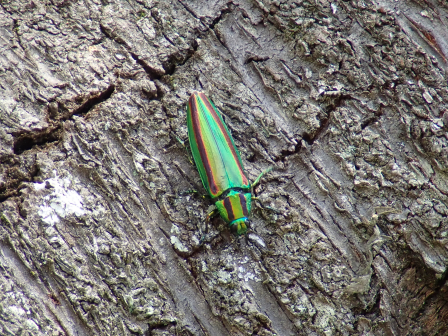フィールド日記
2022.09.16
マルバノホロシ
裏道でマルバノホロシが咲いていました。紫色で、ナス科特有の形をしています。花弁が大きく反り返ることが特徴です。秋から冬にかけて赤い実をつけます。
"Marubano-Horoshi (マルバノホロシ)" plants are in bloom on the back road. The flowers are purple and their shape is unique to the eggplant family. One of their characteristics is that the petals are recurved back. They bear red fruit from fall to winter.
2022.09.13
スズミグモ
渡り廊下にスズミグモがいました。和名は巣に住むクモという意味だそうです。もともと温暖な地域に住むクモですが、分布を北に広げています。
I found a spider called "Suzumi-Gumo (スズミグモ)". The name means spiders living in a nest. They originally live in southern area of Japan but now they are spreading toward the north.
2022.09.09
ダンドボロギク
裏道でダンドボロギクが見られます。北アメリカ原産の帰化植物ですが、和名は日本では愛知県の段土山(だんどさん)で見つかったことに由来します。花は筒状花のみからなり、あまり目立ちませんが、花後の綿毛がよく目立ちます。
You can find "Dando-Borogiku (ダンドボロギク)" plants on the back road. They originally came from North America, but they were named after the "Dando" mountain in Aichi prefecture where they were first found in Japan. The flowers consist of only tubular flowers so they do not stand out very much but the fluffs are quite visible after the flowers have bloomed.
2022.09.06
ヒカゲイノコヅチ
裏道でヒカゲイノコヅチが咲いていました。名前の通り、日陰になる林内でよく見られます。
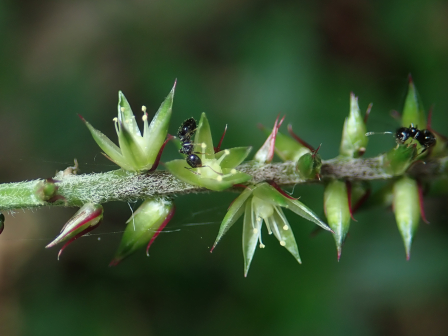
2022.09.02
シロカネイソウロウグモ
前回紹介したジョロウグモの写真の右上に、小さいクモが見られます。シロカネイソウロウグモです。名前の通り、他のクモの網に居候して、獲物を盗み食いして生きています。本種は特にジョロウグモの巣を好むようです。
You can see a small spider on the upper right in the photo posted last time. This spider is called "Shirokane-Isourou-Gumo (シロカネイソウロウグモ)". The name suggests that this spider lives on another spider's web and steals prey to eat. This species prefers especially "Jorou-Gumo" spiders' web.
2022.08.30
ジョロウグモ
共生の森でジョロウグモが目立つようになりました。ジョロウグモの成虫は秋から初冬にかけてよく見られるようになります。人家の周りから山地まで様々な環境に生息しています。写真の個体はちょうどアゲハモドキを捕食しているところでした。
"Jorou (ジョロウ)" Spiders are more notable in the Kyoseinomori (共生の森). The adults of the spiders are often seen from fall to early winter. They live in various places not only around houses but also in mountains. The one in the photo was just eating a moth called "Ageha-Modoki (アゲハモドキ)".
2022.08.26
コジャノメ
共生の森でコジャノメを見つけました。雑木林の林床で見られる蝶です。雑木林の環境が悪化し、減少している場所も多いようです。
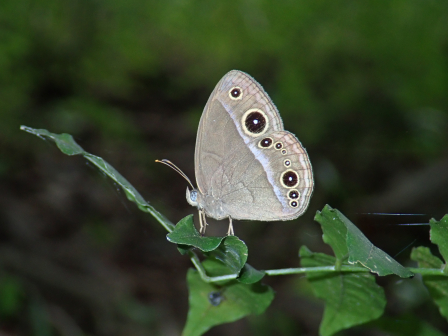
2022.08.23
ツクツクボウシ
共生の森でツクツクボウシが鳴いています。鳴き声がそのまま名前となっています。この個体は比較的低い位置にとまっており、腹部を伸び縮みさせて鳴くようすがよく観察できました。
I found a cicada called "Tsuku-Tsuku-Boushi (ツクツクボウシ)" in the Kyoseinomori (共生の森). The name comes from the sound of their singing. This one in the photo was perching on a relatively low part of a tree, so I was able to see it singing expanding and contracting its abdomen.
2022.08.19
ツマジロエダシャク
共生の森でツマジロエダシャクを見つけました。写真のように、前翅と後翅を離した、特徴的な姿勢で止まります。幼虫はクスノキの葉を食べて育ちます。
I found a "Tsumajiro-Edashaku (ツマジロエダシャク)" in the Kyoseinomori (共生の森). As you can see in the photo, they often perch in a unique posture with forewings and hindwings separated. Their larvae eat the leaves of "Kusunoki" trees.
2022.08.16
ヤマトタマムシ
校庭のサクラの木でヤマトタマムシを見つけました。タマムシの仲間はたくさんいますが、単にタマムシといった場合は本種を指します。美しい金属光沢をもっており、法隆寺の「玉虫厨子(たまむしのずし)」の装飾にはヤマトタマムシの羽が使われていることが知られています。
I found a "Yamato-Tamamushi (ヤマトタマムシ)" beetle on a cherry blossom tree in the school ground. There are many species in the "Tamamushi (タマムシ)" group, but it usually means this species when you say just "Tamamushi". They have a beautiful metallic luster. It's a well-known fact that their wings were used to decorate "Tamamushi-No-Zushi (たまむしのずし)" in the Horyu-Ji temple.



